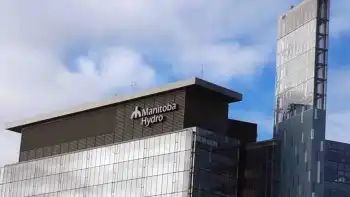Australia beefs up renewable efforts
By New York Times
CSA Z463 Electrical Maintenance
Our customized live online or in‑person group training can be delivered to your staff at your location.

- Live Online
- 6 hours Instructor-led
- Group Training Available
Renewable energy now supplies just 6 percent of power in Australia because the country has historically lacked the political and commercial will to pursue big renewable energy projects. And the very sources of Australia’s clean energy — its vast outback and nearly 60,000 kilometers, or 37,000 miles, of coast — are major obstacles to linking new, remote power sources into the grid.
“It’s a blessing and a curse,” said Matthew Warren, head of the Clean Energy Council, which represents more than 350 companies in renewable energy and energy efficiency fields.
“Australia is really at the top of the list, in the scale of the economy and the quality and scale of renewable resources,” Mr. Warren said. “But the grid issues are significant because we run a very, very large, long and thin grid,” he said.
“It’s like running a grid from Paris to Moscow with sparsely distributed energy demand through that grid.”
But Australia has begun to tackle the problem. Revised renewable energy targets passed in June earmarked 20 billion Australian dollars, or nearly $18 billion, for clean energy technologies by 2020 and are expected to create 28,000 new jobs.
On August 12, the largest energy retailer in Australia, A.G.L. Energy, and New ZealandÂ’s state-owned Meridian Energy announced that they would build a billion-dollar wind farm in Macarthur, in Victoria State. Its 140 wind turbines would make it the largest wind farm in the Southern Hemisphere, generating enough power for 220,000 homes and abating 1.7 million tons of greenhouse gases annually, which is equivalent to taking 420,000 cars off the road. And wind generation is cheaper than other forms of renewable energy destined to feed a grid, says Tim Lusk, chief executive of Meridian.
Australia has set a renewable energy target of 20 percent by 2020, which the Clean Energy Council believes can be met despite the fact Australia has not put a price on carbon emissions. While campaigning for elections, the governing Labor Party and the conservative opposition appeared divided over whether to set such a “carbon price,” which would force coal power operators to invest in cleaner technology and make renewable energy more competitive.
Not having a carbon price could cost the Australian economy and consumers an extra 2 billion dollars by 2020 because of investment in less energy efficient power plants, the Climate Institute in Australia estimates.
“It would be better in the long run if we had a carbon price,” said Mr. Warren of the Clean Energy Council. “It’s the economic tool of choice, because it’s seen as being the most efficient and most effective.”
He added: “Once introduced, it creates a core signal to business to change their investment patterns. Without it we are in a second-best market. We encourage a more cooperative approach to a carbon scheme as quickly as possible.”
But the bipartisan agreement that helped pass the laws on renewable energy in June does not exist on carbon. To get the renewable energy legislation passed in the Senate, Australia had to separate its renewable energy plans from its carbon trading program, just as President Barack Obama had to cut his clean energy initiatives from sweeping climate change legislation to appease the U.S. Congress.
Prime Minister Julia Gillard has said that she is still in favor of a market-based carbon program to tackle climate change but has deferred a decision until 2012. Tony Abbott, the opposition leader, is opposed to a carbon price.
Worldwide, investment in renewable energies has boomed in recent years, with some $190 billion worth of new clean energy in 2008, according to the Renewables Global Status Report for 2009. The number of large solar plants tripled to 1,800 between 2007 and 2008, with the majority of new plants in Spain, the Czech Republic, France, Germany, Italy, South Korea and Portugal. The United States, the worldÂ’s biggest source of wind energy, installed five times AustraliaÂ’s total wind energy capacity in 2008 alone.
One of the problems in Australia is that the country has too many energy resources, and too much cheap coal. The country is the leading exporter of coal in the world, and it generates about 80 percent of its electricity through coal-fired power stations.
Australia does not have energy security issues like Europe — which depends on Russia for natural gas — or the United States, which is trying to reduce its use of imported oil, said Mr. Warren of the Clean Energy Council. Such positions give those countries a greater incentive to take a more aggressive approach to renewable energy.
Australia did have an opportunity in the 1980s and 1990s to develop large-scale renewable energy, but it let it slip. Back then, Australian scientists were in the vanguard of renewable energy technology, most notably Shi Zhengrong, who became known as the “Sun King” after leaving Australia to produce solar cells in China. Suntech Power, Mr. Shi’s company, is now one of the world’s leading makers of photovoltaic solar panels.
While Australian scientists still work at the cutting edge of renewable technology, there are not enough market drivers to expand the countryÂ’s renewable industry, says Iain MacGill, of the Center for Energy and Environmental Markets at the University of New South Wales in Sydney.
“We did have early leads, we were one of the world’s larger PV manufacturers and deployers back in the ’80s,” Mr. MacGill said, referring to photovoltaics. “The competition steepened, and it would have taken significant investment and risk to have stayed in the game. But we withdrew from the race, and that’s a shame.”
Still, Australia could completely switch to renewable energy in 10 years by building 12 huge solar thermal power stations and 23 large-scale wind farms, according to the “Zero Carbon Australia Stationary Energy Plan” released this month by Melbourne University, the Beyond Zero Emissions group and Sinclair Knight Merz engineers.
The solar plants would generate 60 percent of the countryÂ’s power by using Australian technology to store heat in molten salt, which allows them to operate 24 hours a day. The rest would come from 6,500 wind turbines dotted mainly around the coast. The network would generate an estimated 325 terawatts per hour of power a year, according to the plan.
This ambitious clean energy network would cost 370 billion dollars over 10 years, but the cost to each household is estimated at a mere 8 dollars a week.
“Our long-term global goal is to very substantially reduce our emissions, a goal that will require almost all of our stationary energy to be produced from zero or near-zero emission sources. This report demonstrates we could already be technologically ready to do that,” said Malcolm Turnbull, a former Australian environment minister.
For now, though, Australia has the highest average solar radiation of any continent but has barely tapped into solar power. Its largest solar thermal plant produces only 1.5 megawatts of power, and wind provides only 16 percent of AustraliaÂ’s renewable energy today.
But the governmentÂ’s 1.5-billion-dollar Solar Flagship Program aims to develop the sector by helping to finance the building and development of large 1,000-megawatt solar power stations. It has also pledged 100 million dollars in renewable energy venture capital.
The small Greens party has also proposed loan guarantees worth 5 billion dollars and a feed-in tariff for large-scale renewable energy developments, similar to the U.S. model, which provides a 100 percent guarantee.
“In the context of the global financial crisis, loan guarantees are essential to help renewable energy developers access the finance they need to build baseload power stations,” said Christine Milne, a Greens senator.











